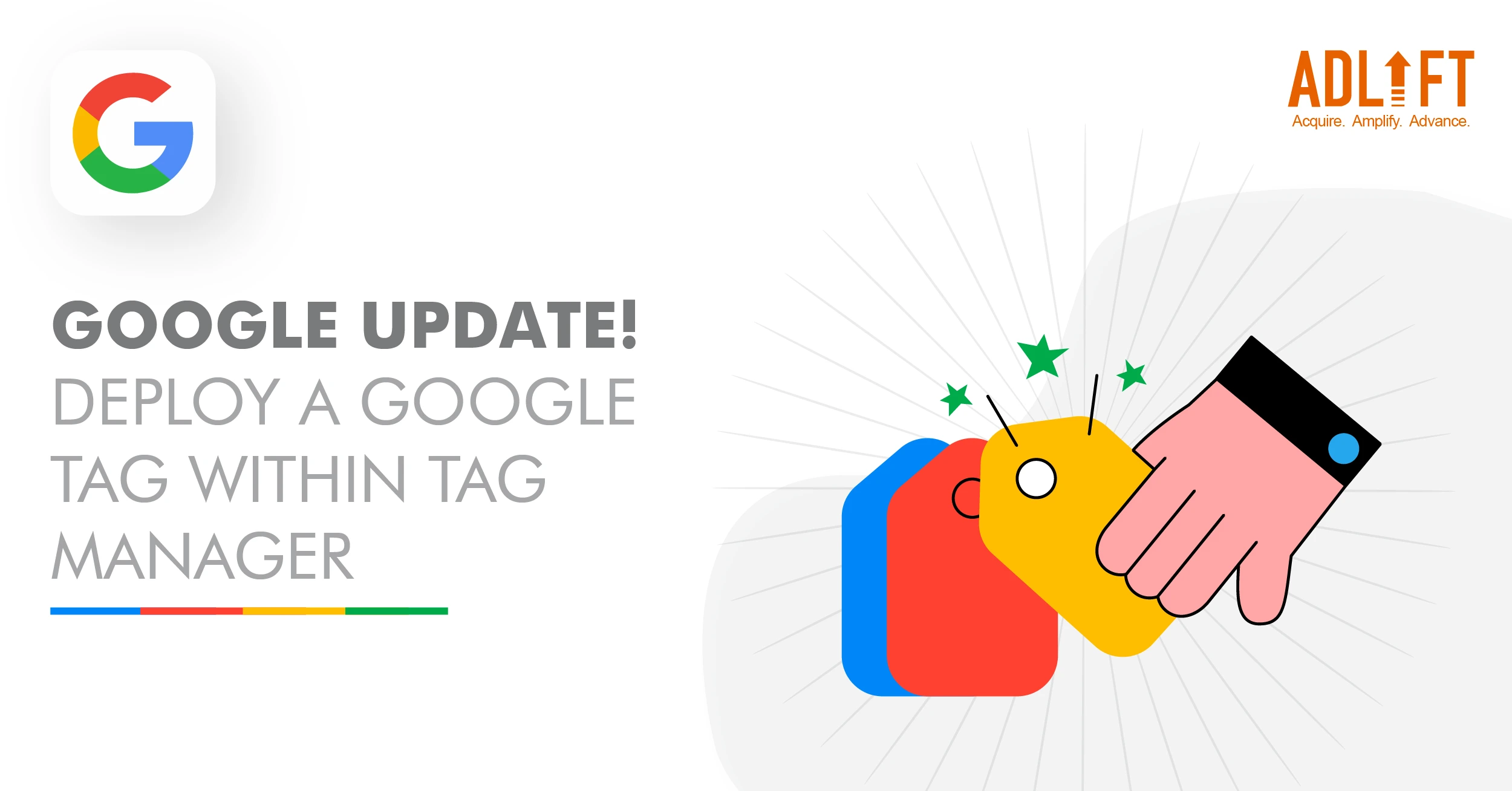Google Update! Deploy a Google Tag within Tag Manager

We know that reading the term ‘Google Update’ can lead to some serious levels of anxiety, especially at the rate at which Google has been rolling them out! But fear not, this latest update from the Google Tag Manager team isn’t going to be disruptive, and you don’t need to call on your first responders! This update has got Google (and us!) pretty excited! Why? Because now you are going to be able to deploy a Google tag within Tag Manager– starting as soon as next week!
Let’s get down to the basics:
What is a Google Tag?
The gtag.js by Google is a singular tag for your website, enabling the use of diverse Google services. Rather than handling many tags for separate Google product accounts, you can employ this one across your site. It permits sending site data to connected Google product destinations, aiding in gauging websites and ad efficacy. Presently, the tag is alterable only via Google Ads and Google Analytics 4.
What is a Google Tag Manager?
It’s a free tool – a tag management system (TMS) – that allows you to seamlessly update measurement codes and related code fragments collectively known as tags on your website or mobile app.
What are the Google Analytics: GA4 Configuration Tag?
With a GA4 configuration tag, you are assured that the data from your site is transferred to Google Analytics. This tag lets you set up events on your website without any coding, and this event data appears in your GA4 reports.
What’s New?
The Google Analytics: GA4 Configuration tag will now be replaced by the Google tag! This transition unlocks enhanced integration with various Google products, enabling smooth data transmission to multiple destinations. Here’s what this implies:
Enhanced integration with other Google products: The new Google tag enables data transmission to multiple Google product destinations. Now, Google Ads users can set up their Google tag via Tag Manager to send conversions.
Settings variables: Both the Google tag and GA4 Event tags allow reusing parameters at the configuration and event levels.
Configuration settings variable: This permits defining parameters upon Google tag loading. For instance, if your website is in multiple languages, you can create a configuration variable for language and use it across tags.
Event settings variable: This enables adding extra parameters to each event. For instance, in an online sale, you can reuse a parameter with an event settings variable to track discount code usage.
If you presently have GA4 configuration tags in use, they will be automatically upgraded to the Google tag. Your measurements and capabilities will remain unaffected, requiring no action from your end.
What it looks like:
According to the Google Tag Manager team, this update will make your Google tag look a bit different than the previous GA4 Configuration tag.
These are the template changes that are going to take place, without any changes to tag behavior:
Tag ID instead of Measurement ID. Your Google tag (gtag.js) features a sole tag ID for easy integration with diverse Google products and services. Rather than managing several tags for separate Google product accounts, you can utilize a single Google tag across your whole website and link the tag ID to multiple destinations. GA4 Event tags will still utilize Measurement ID. Events triggered by a GA4 Event tag will exclusively be sent to the designated GA4 data stream.
“Send a page view event when this configuration loads” will be relocated to the configuration settings variable. All existing settings will persist.
“Send to server container” will be transferred to the Configuration settings variable. All existing settings will continue to be upheld.
“Fields to Set” will be substituted with two fresh settings variables:
-
- A configuration-level settings variable to establish parameters when the Google tag loads.
- An event-level settings variable to establish parameters when the Google tag loads. User Properties will be shifted to a section within the “Event settings” variable, as depicted below. All current user property settings will endure, remaining visible on the tag.
So, there you have it, this wasn’t a scary update now, was it? With this latest transition, deploying a Google Tag within Tag Manager has become more intuitive and effective than before! With integration with various Google products, you now have smooth data transmission to multiple destinations.
If you want to be ready and respond to whatever Google throws in your direction, contact the SEO experts at AdLift today!
Read Tag Manager Announcement Here: Google
Categories
Recent Posts
- How do I Verify My Business on Google to Ace Local SEO? March 17, 2025
- The Pros and Cons of Pay For Performance SEO March 17, 2025
- Website Structure for SEO: A Blueprint for Better Rankings March 17, 2025
- Is SEO for Subdomains Hurting your Rankings? Let’s Find Out! March 17, 2025
- Outsourcing SEO: A Cost-effective Solution for Startups to Scale Quickly March 17, 2025
- Keyword Cannibalization: Why It Matters for Your Company and How to Avoid It March 12, 2025
- The Role of SEO Projections in Budget Planning for CMOs March 11, 2025
- SEO for Bing: Unlocking Opportunities for Business Owners and Marketers March 11, 2025
- How to Maintain SEO and Rankings: Your SEO Maintenance Checklist March 7, 2025
- Must-have Enterprise SEO Tools to Boost your Online Presence March 7, 2025
Get
in Touch
Contact AdLift for a 360-degree marketing plan



